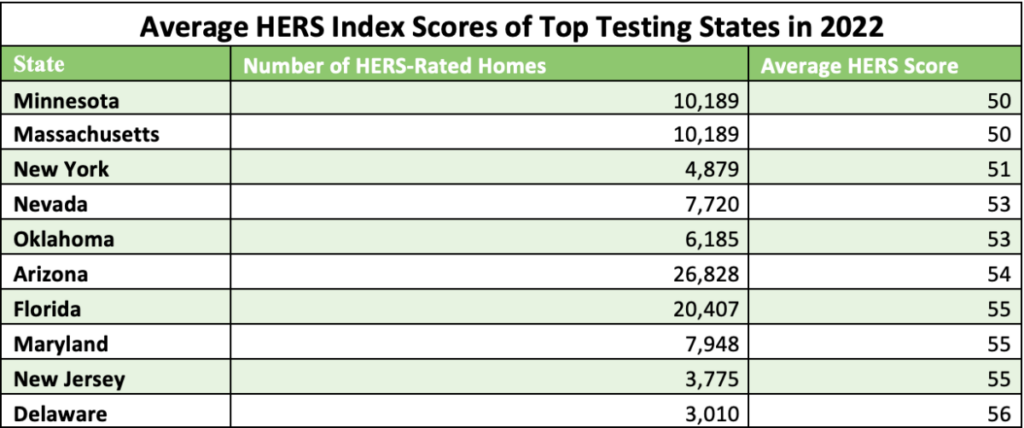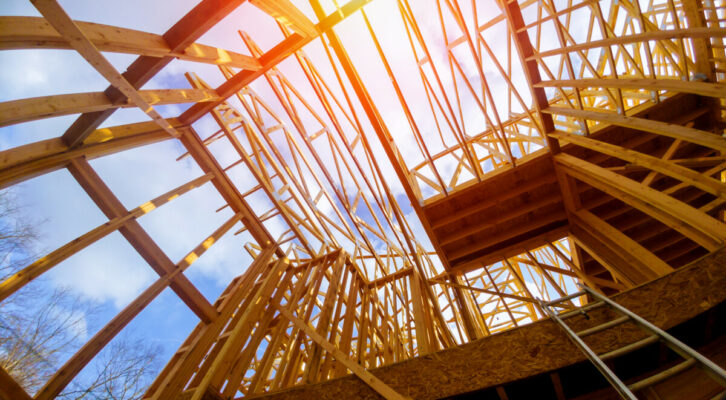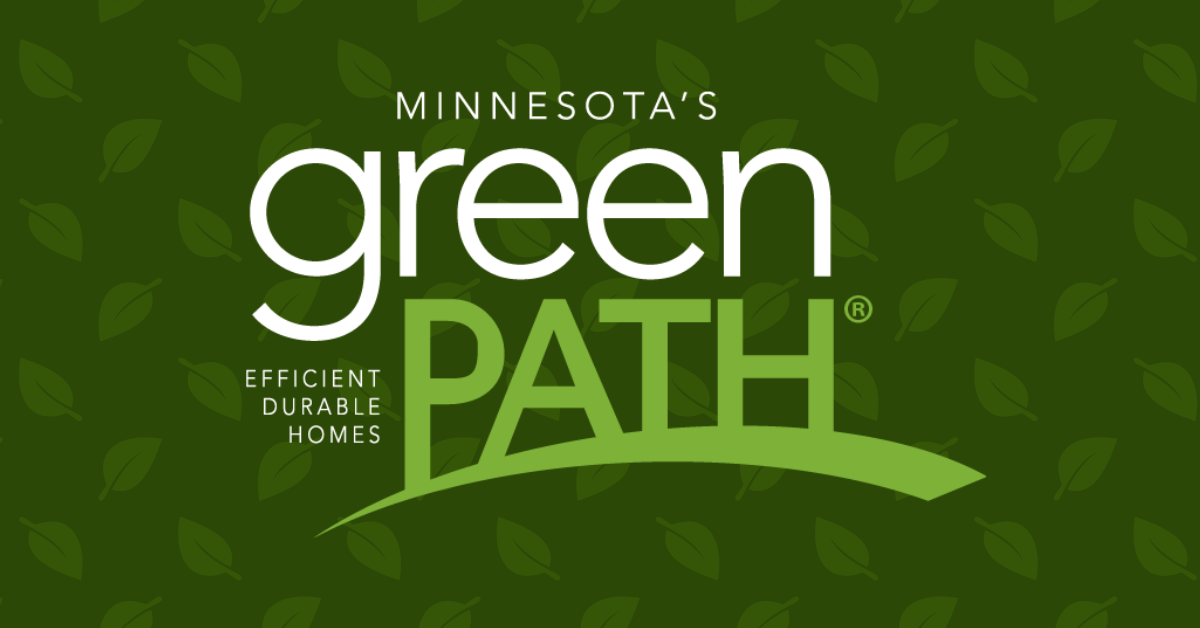According to Residential Energy Services Network (RESNET), Minnesota has one of the lowest average Home Energy Rating System (HERS) Index Scores of all states in the country that energy tested more than 3,000 homes in 2022. The lower the HERS Index Score, the more energy efficient the home is. According to RESNET, Minnesota tested 10,189 homes in 2022 and the state’s average HERS Index Score was 50.

The U.S. Department of Energy has determined that a typical resale home scores 130 on the HERS Index, while a standard new home is awarded a rating of 100.
Housing First Minnesota’s Green Path program has provided Home Performance Reports (HPRs) and HERS index scores for more than 39,000 homes that have been third-party tested since the program began. The state’s average HERS score of 50 means that the average Minnesota Green Path energy-tested home is 50% more energy efficient than a standard new home and 61% more energy efficient than the average existing home.
Many builders across the state consistently choose to go above and beyond the code to provide additional energy-efficient benefits to their homebuyers thanks to Minnesota’s Green Path program.
“Minnesota’s continued leadership in green building nationwide is a demonstration of Minnesota’s Green Path program’s strength and success as a source for builders and consumers alike,” said James Vagle, CEO of Housing First Minnesota. “Strong energy efficiency has become a highly sought feature for new homebuyers, and with Minnesota’s Green Path program and HERS Index Scores, homeowners feel empowered with the necessary knowledge regarding their home’s energy performance.”
Minnesota’s Green Path currently has 50 builders committed as Designated Green Path Builders. Designated Green Path builders commit to testing at least 75% of their newly built homes annually and attend professional development events throughout the year.
According to RESNET, there were 337,962 homes HERS rated in the country in 2022. The national average HERS Index Score in 2022 was 58, which is 42% more efficient than a home built in 2006 and 72% more efficient than a home built in the 1970s.

















